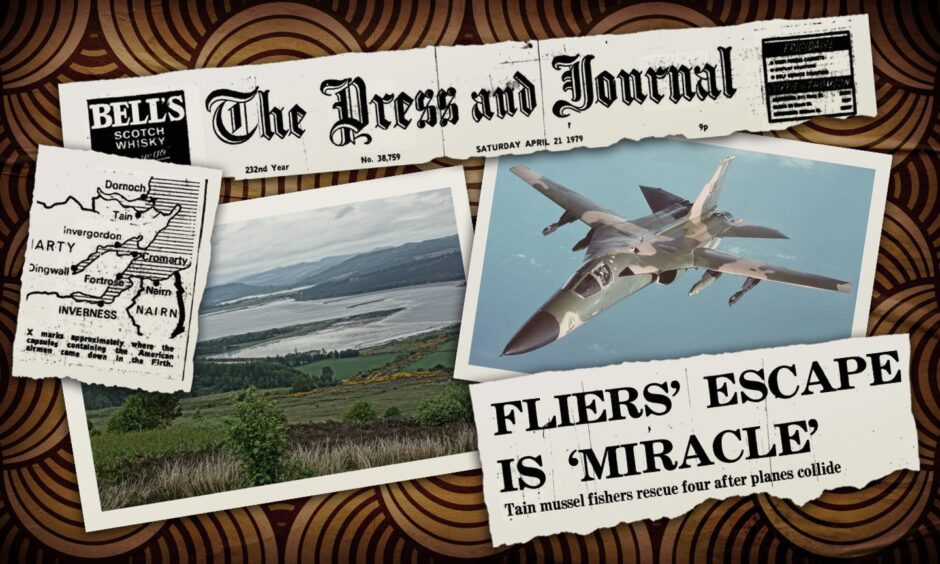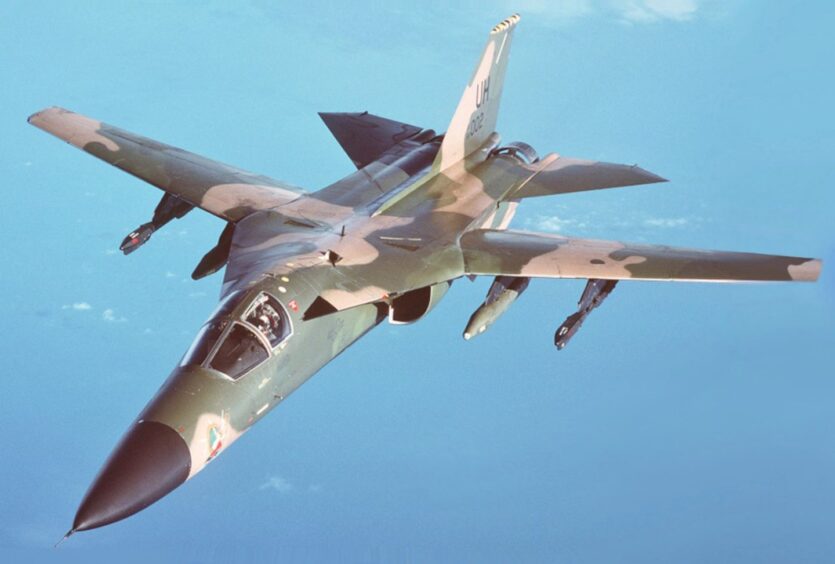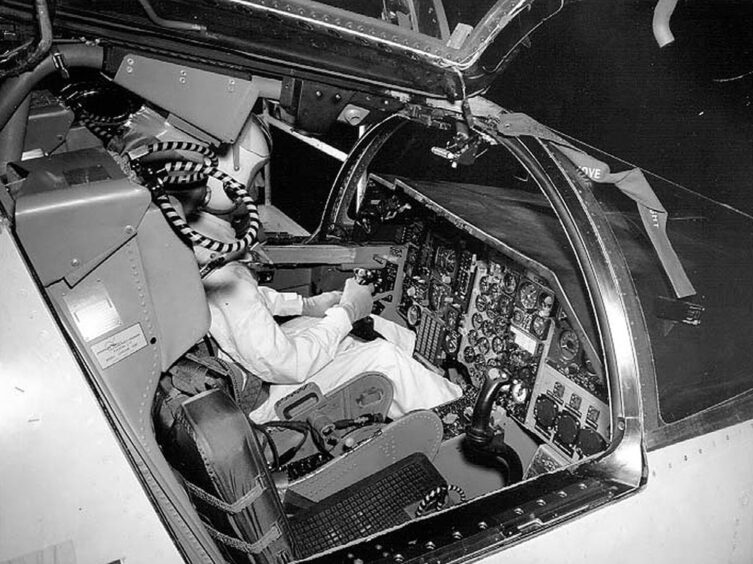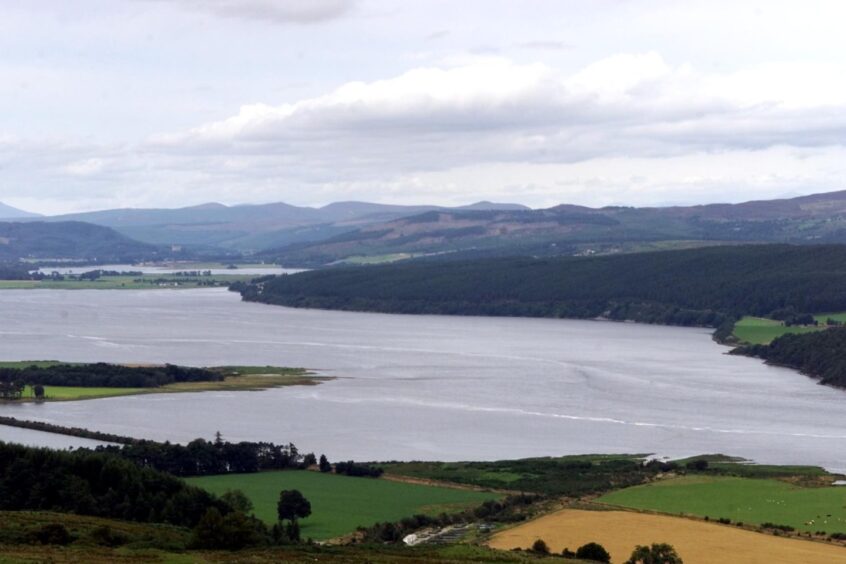
Three Tain mussel fishermen got more than they bargained for when they were working in the Dornoch Firth on this day in 1979.
Two US Air Force F1-11 fighter bombers collided in mid-air during training operations over the Dornoch Firth, less than three miles from Dornoch and Tain, and the fishermen raced to the rescue.
Fortunately, the supersonic fighter jets had capsule ejection systems, rather than the traditional ejector seats, which meant that the fishermen were racing towards two capsules bobbing the firth.
Skipper Peter Moscati, 33, from Meikle Ferry near Tain, said: “We were two to three miles away when we saw the column of smoke and the parachutes coming down.
“We made all speed towards them and reached the first capsule within 15 minutes. We expected to find a frozen flier in a dinghy but instead there were two aircraftmen still in their plane cockpit, surrounded by buoyancy bags.
“They seemed all right to us and we went on to get the other two.
“They came out of their capsule and into the water, where we picked them up. They were cold but appeared unharmed.”
By this time an RAF helicopter had made it to the scene, and an RAF Nimrod also appeared, to monitor operations from above.
Mr Moscati went on: “We went back for the first pair and the helicopter came over us.
“The other two came aboard and then all four were winched into the machine and away.”
He added with masterful understatement: “It was quite a day…”
Eye witness accounts
Meanwhile there was consternation on land among the witnesses, including 10-year-old Abigail Keys from Alderton near Cheltenham, on holiday with her family in a caravan at Dornoch beach.
She said: “I said to my brother Rupert that I thought the planes were going to touch, and they did with a big bang and a flash.
“We had watched them going low to drop their smoke bombs and then they rose higher, with one behind the other.
“Then the second one seemed to catch up on the first.”
Ex-councillor and former provost of Dornoch Harry Clunie immediately got on his long-standing hobby horse of trying to stop planes from flying over built-up areas to the Tain Air Weapons range.
He said: “These planes could well have landed in Dornoch or any other built-up area. It was lucky they came down in the sea.
“I heard the crash and the young girl next door saw it.
“They should not be flying over built up areas. They are flying over Dornoch every day.”
A ball of fire and smoke
Regional and district councillor Henry Miller saw the accident from his tractor while he was working in his fields.
He said: “I did not hear the explosion, but I saw a ball of fire, smoke, and then two parachutes.”
Curiously the famous ‘Seer of Ardgay’ Swein Macdonald comes into this story, through his wife Isobel Macdonald who was motoring towards Tain when she saw what she took to be a plane coming down.
“It hit the ground, and blew up in a mass of flames and smoke,” she said. Whether her husband had predicted this or not is not recorded.
Criticism of rescue time
A caravan owner at Embo, John Macintosh piped up to criticise the length of time it took to get a rescue helicopter to the scene.
He said: “I would not like to crash out there if it takes half-an-hour to be picked up by the rescue services. We have always been told it would be only a matter of minutes.”
But his comments were rebuffed by authorities after it turned out that the first Dornoch police knew of the accident was that a ‘Hunter’ [the witness probably meaning a Hawker Hunter, another type of jet fighter of the age] had crashed.
Police got misleading information
Their first reaction was that it had been a car crash — the Hillman Hunter was a common car at the time.
The confusion led to a 15 minute delay in alerting RAF Search and Rescue HQ at Pitreavie.
They immediately scrambled a Sea King helicopter at Lossiemouth which was on the scene almost 40 miles away within 14 minutes.
The USAF pilots, from 48th Tactical Fighter Wing, were flown to the medical centre at RAF Lossiemouth for a routine check.
“A bit shocked”… talk about an understatement
A spokesman from the base said: “They all walked out of the helicopter. They looked a bit shocked but that was all.
“They went to the medical centre where the station medical officer Flt Lt Andy Kirk examined them and did some routine rests. They were all OK.”
After that they were flown by Hercules back to their base at RAF Lakenheath.
The incident cost the USAF around £6m per lost aircraft.


